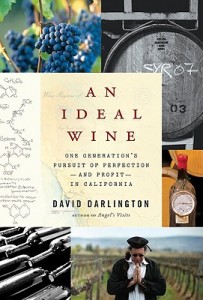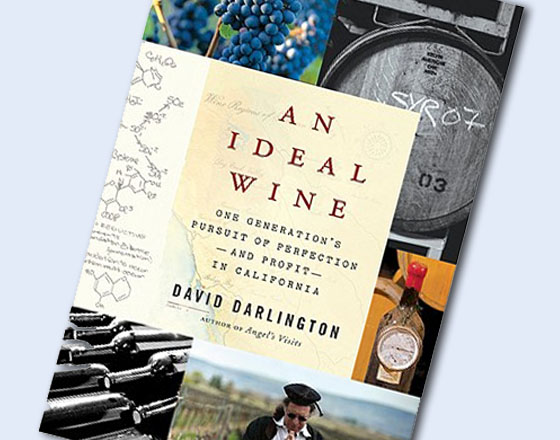 It’s easy to choose sides in wine. We get emotional about the process. That’s how we got saddled with such a silly word like “natural” describing a product that isn’t hardly natural. And before you think I’m pro-industrial wine — another silly construction — I’ll just say that I prefer to leave the fruit compote where it belongs. At Bob Evans.
It’s easy to choose sides in wine. We get emotional about the process. That’s how we got saddled with such a silly word like “natural” describing a product that isn’t hardly natural. And before you think I’m pro-industrial wine — another silly construction — I’ll just say that I prefer to leave the fruit compote where it belongs. At Bob Evans.
So here’s a wine book review that’s somewhat overdue, given that the book was released in 2011. But unlike most books I read, I didn’t read David Darlington’s An Ideal Wine cover-to-cover without picking up other books. This is an important book, but not a page turner, and I read it in spurts. It’s part history book, part personal drama, and the best word to describe the book is “thorough.” The second best, significantly, is “fair.”
What is an ideal wine, anyway? Is it a wine that is manipulated to taste delicious, pleasing the largest number of consumers? Or is it a wine made minimalistically, offering a clear sense of the land on which it’s grown?
If you expect the author to choose a side, you’ll be disappointed. Darlington does a marvelous job of presenting the competing views without denigrating one of them.
This broad-ranging book hangs its focus on two main characters: the brilliant Randall Grahm of Bonny Doon Vineyard, and the innovative Leo McCloskey, the man behind some of the most controversial developments in wine. Grahm has become a wandering winemaker, in constant search of the most expressive terroir in California. He burns through money, fires up a trial here and a trial there, seems to lose interest, and heads off to the next siren vineyard. McCloskey is what you might imagine to be the opposite: He helps wineries achieve high point scores and high sales figures by using his custom formulas on when to pick grapes, how to proceed in the winery, etc.
I’ve read some reviews that get a little too cute with Ideal Wine, claiming that Grahm and McCloskey are not all that different after all! Of course they are. Darlington has chosen wisely in his quest to find compelling characters at the opposite ends of this polarizing debate over ‘What Wine Should Be.’ The similarities between the two men are revealed in their intellect and ability to see what others can’t. Leo McCloskey might run a business — Enologix — that you find troubling, but he’s simply filling a hole in the marketplace. Not every customer wants a wine that speaks of a place. Some want a wine that is simple, delicious, consistent.
Now, the part about McCloskey figuring out how to calibrate a wine to a critic’s palate, well…
It’s to Darlington’s credit that McCloskey is not portrayed as a villain in any sense. Clearly, the author is impressed with Grahm. He details Grahm’s unique winemaking efforts, his marketing, his belletristic newsletters. But Darlington does not allow his affection for Grahm to give McCloskey a black hat. Darlington gives readers a clear sense for just how savvy McCloskey is, and how experienced he is when it comes to wine. California wine, especially.
Along the way, Darlington unfolds a long history of California wine. Readers can be forgiven if they occasionally skip chunks of pages; sometimes the background can drag. Darlington is the kind of reporter who gathers so much information that he simply must feel the need to give it all to his readers. He’s an outstanding researcher.
I enjoyed the cast of characters, however, and this book serves as a history reference for the early California wine culture. If you’ve enjoyed a California wine that is more than a few years old, chances are you’ll hear from the owner or winemaker in this book.
So how does this book relate to the New York wine scene? I think it’s a reminder that there are many ways to make successful wine, but tortured souls like Randall Grahm will have to accept a life bereft of material riches if they want to find the special places for grape growing. That’s true out west, where Grahm confesses — in a sad moment — that what he really wants is Ridge F-ing Montebello. And that’s already been discovered.
And it’s true in New York state, where just a few scant decades give us a guide of what grows best, where. Sure, the moneyed few could hire Leo McCloskey to explain what day and time is the ideal moment to pick riesling. But I’ll go ahead and pick a side: I prefer the seekers, the open-minded experimenters, the men and women who want the land’s voice in a bottle. There is no such thing as an ideal wine. There is, however, a lot to learn from David Darlington’s important book.

